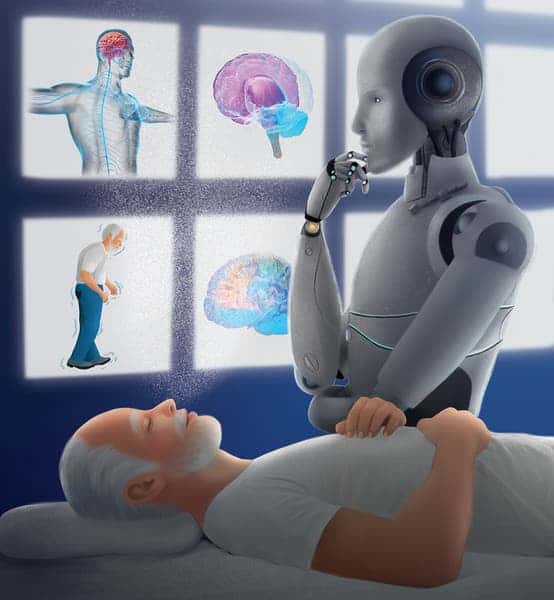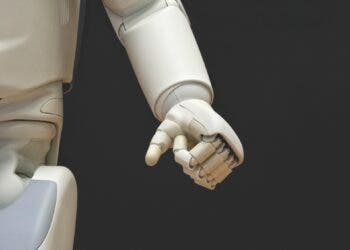A novel device developed by MIT engineers can detect Parkinson’s, a neurodegenerative disease that is notoriously difficult to diagnose, by monitoring a person’s breathing patterns.

At first glance, the device looks like a home Wi-Fi router. But in this case, appearances are very deceiving. The device actually emits radio signals which bounce off all the surrounding surfaces, including a person’s body. A number of connected machine learning algorithms that are designed to mimic the way the human brain spots patterns, called a neural network, constantly look at a person’s nightly sleep to essentially monitor breathing without ever physically touching the body itself.
Basically, the machine is looking for signs of Parkinson’s.
Listening for Parkinson’s
During experiments, MIT researchers led by Dina Katabi, showed that this system could discern the severity of disease for Parkinson’s patients and track how their symptoms progressed over time.
Parkinson’s is the second-most common neurological disorder, after Alzheimer’s disease. It’s classed as a degenerative disorder of the central nervous system mainly affecting the motor system, explaining the shacking, slowness of movement, and body stiffness that Parkinson’s is notorious for.
The mechanisms behind Parkinson’s are still largely unknown but scientists are currently investigating the effects that genetics, environmental factors, and the natural process of aging have on cell death in connection with the disease. Some scientists have proposed that Parkinson’s appears after dopamine-producing neurons start dying. Another possible cause is the presence of high levels of glutamate, the most abundant neurotransmitter in our brain and central nervous system. There have even been speculations that exposure to the herbicide paraquat may be involved, leading to a number of paraquat-related lawsuits, but reviews of the studies published so far have not found that the herbicide is associated with a greater risk of Parkinson’s.
Despite progress, there’s no real cure for Parkinson’s and, to make matters worse, there is no specific test for the condition making diagnosis extremely difficult. The symptoms can vary from person to person and some of them overlap with those of other symptoms, which is why misdiagnoses in the case of Parkinson’s are quite common.
The fact that such a cumbersome condition can be reliably tracked just by analyzing a patient’s breathing is all the more extraordinary. In fact, it was Dr. James Parkinson, the eighteenth-century British surgeon who first described the disease, who noted as early as 1817 a relationship between Parkinson’s and breathing. Dr. Parkinson noticed that the breathing of patients changed significantly once they developed Parkinson’s, which inspired Katabi and colleagues to look further into this.
“Some medical studies have shown that respiratory symptoms manifest years before motor symptoms, meaning that breathing attributes could be promising for risk assessment prior to Parkinson’s diagnosis,” Katabi said in a statement.
One of the biggest challenges doctors face with Parkinson’s is the fact that the onset of the disease can occur 5 to 10 years before the actual symptoms show. By the time these symptoms manifest, it’s already too late to do anything other managing the symptoms, which will only get worse over time.
The system developed at MIT, known as Emerald, can effectively monitor a Parkinson’s patient’s progression 24/7 through radio signals that reflect off their body. The waves that bounce off the patient can reveal precise information about sleep patterns, including heart rate, which are interpreted by an AI developed by the team. The AI model was trained through data gathered over 11,964 nights, with more than 120,000 hours of nocturnal breathing signals from 757 Parkinson’s subjects and 6,914 control subjects.
There are a number of applications. Researchers conducting clinical trials testing the efficacy of new drugs and treatments can do so much easier and reliably, using fewer participants and over a shorter period of time. And from a clinical care perspective, remote monitoring could prove particularly useful for patients living in rural and remote areas, as well as for those whose condition makes highly challenging to leave their homes.
“We have very limited information about manifestations of the disease in their natural environment and [Katabi’s] device allows you to get objective, real-world assessments of how people are doing at home. The analogy I like to draw [of current Parkinson’s assessments] is a street lamp at night, and what we see from the street lamp is a very small segment … [Katabi’s] entirely contactless sensor helps us illuminate the darkness,” said Ray Dorsey, a professor of neurology at the University of Rochester and Parkinson’s specialist who co-authored the paper.
It’s not the first time AI is proving its worth as a diagnosis tool — from epilepsy to heart disease, we’re only starting to unveil the potential of this technology.
The findings appeared in the journal Nature Medicine.






